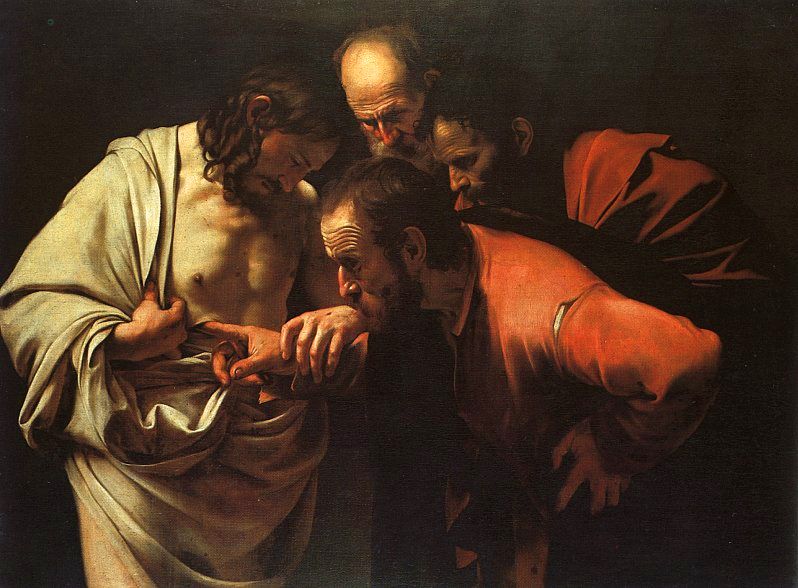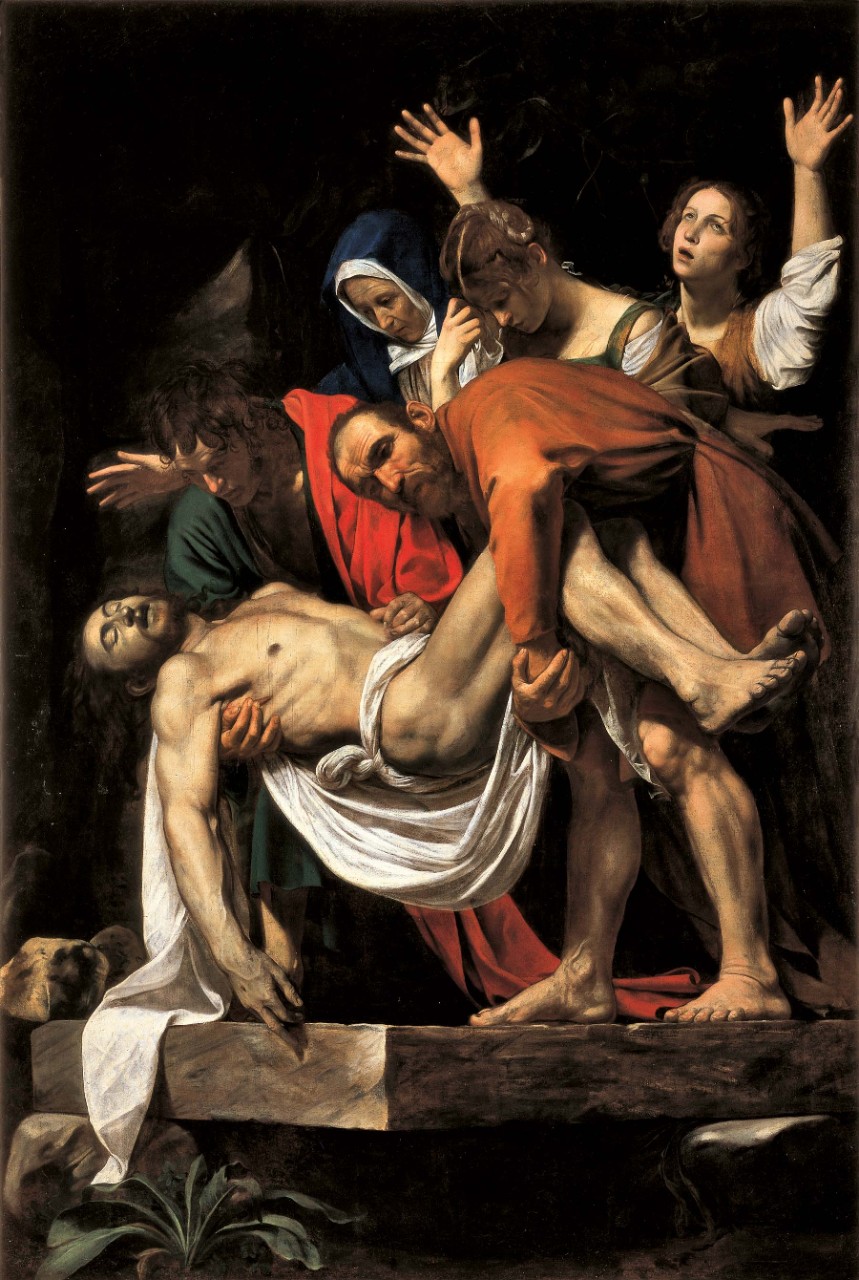
“Doubting Thomas”, c.1601/02, Caravaggio, Bildergalerie, Schloss Sanssouci, Potsdam, Germany.
This image is notable for the intense focus on the wound in the side of the Risen Christ. All four figures stare intently at the finger as it penetrates the flesh of Christ’s side. Light falls from above and picks out the top of the saint’s hand and his index finger. It highlights Christ’s hand as he delicately guides the hand of St Thomas. Look at the expressions on their faces! The wrinkled brows of the three disciples show their amazement. perhaps, they are amazed not just at the fact that Christ’s flesh is as real as theirs, but that Christ is actually letting this be done to him. The expression on Christ’s face, masterfully captured in shadow, with his lips parted, suggests that the wound is indeed tender. There are a number of other realistic details, not least the dirt beneath the finger nails of St Thomas. It is known that this work was painted as a private commission while Caravaggio was in Rome. however, it was an unusual choice of subject for Rome. Unlike other Italian cities, the Holy City had no strong tradition of devotion to St Thomas. Caravaggio’s treatment of the subject is novel in that, like a modern camera, he “zooms” in on Christ and just three apostles, shown half-length, in an undefined space. The other disciples in the room are not seen. Moreover, Christ allows Thomas to actually stick his finger inside the wound, with an eye for detail that even lets the light catch the flap of skin raised by his finger. There is no blood, but this image is about as visceral as it gets. This work was copied much more than others. Although, the exact circumstances of this commission are unknown, it is known that by 1606 this picture was in possession of one of the artist’s patrons, Vincenzo Guistiniani, because in that year his secretary notes that his master had seen a copy of it in Genoa. But why would such a Roman patron commission Caravaggio to paint this subject? Well, the answer may lie in the historical context. Notice that the light falls not just on the wound but on the shroud draped around the Risen Christ. This painting comes from the Rome of Clement VIII and the shroud was significant. In the aftermath of the Council of Trent, the Pope had sought to use art and architecture as one means of renewing and refocusing faith. In Clement’s Rome, ancient churches were renovated and new paintings were commissioned to decorate them. The Jubilee year of 1600 was a focal point in this great program of renewal and Vincenzo Guistiniani was deeply embedded in this culture of renewal. Around the time Caravaggio worked on this painting he also worked on his “Entombment”.

It was for a side-altar in the nearby Oratorian Church of Santa Maria in Vallicella, also known as the Chiesa Nuova. In this work, as John supports the dead weight of Christ, his hand touches the wound in his side. The white linen shroud draped around the body of the dead Christ in the “Entombment” is also worn by the Risen Christ as he allows St Thomas to touch his wound. The shroud and the wounds of Christ are closely linked by the relic now known as the Turin Shroud. In 1576 plague had broken out in Milan and the then Archbishop of Milan, St Carlo Borromeo, prayed before a relic of the Passion: the Holy Shroud. It was at this time that the shroud was taken from France to Turin and it was to become hugely prominent in Counter Reformation devotion. Devotional writers connected it closely to the wounds of Christ. After all, it bore their trace. Having seen Caravaggio’s “Entombment” in the Chiesa Nuova, Vincenzo Guistiniani, as a true son of the Counter Reformation, may well have commissioned an altogether more private and more intimate painting focusing both on the wounds of Christ and on the Holy Shroud.
The Catholic Chaplaincy serves the students and staff of the University of Edinburgh, Edinburgh Napier University and Queen Margaret University.
The Catholic Chaplaincy is also a parish of the Archdiocese of St Andrews and Edinburgh (the Parish of St Albert the Great) and all Catholic students and staff are automatically members of this parish.